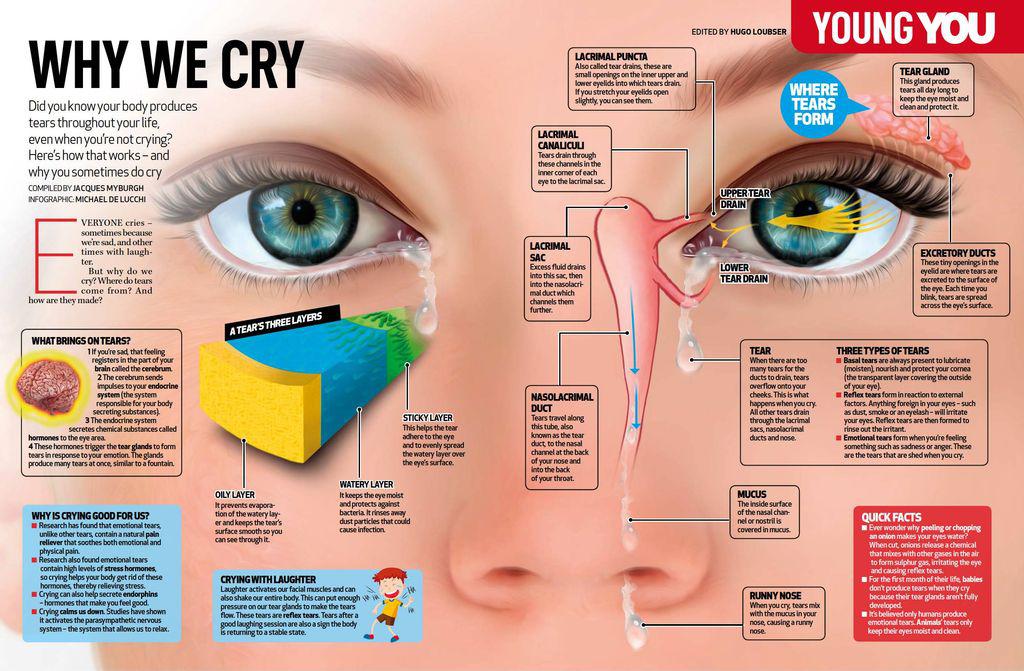
Introduction
Tears are a natural bodily function that we all experience at some point in our lives. Whether it's from crying over a sad movie or a physical injury, tears are an important part of our overall health and well-being. But have you ever wondered where tears come from and why we produce them?

Tear Glands
The answer lies in our tear glands, which are located above our eyes. These glands produce tears, which then flow through small ducts and onto the surface of our eyes. There are three types of tear glands - the lacrimal gland, the accessory lacrimal glands, and the glands of Krause and Wolfring.
The lacrimal gland is the largest and most important tear gland. It's located in the upper outer corner of each eye and produces the majority of our tears. The accessory lacrimal glands are located under the conjunctiva and produce additional tears. The glands of Krause and Wolfring are located in the eyelids and produce a small amount of tears.

Types of Tears
Not all tears are created equal. In fact, there are three distinct types of tears - basal tears, reflex tears, and emotional tears.
Basal tears are constantly produced by our tear glands to keep our eyes lubricated and moist. These tears are important for maintaining the health of our eyes and preventing dryness and irritation.
Reflex tears are produced in response to an irritant, such as dust or smoke. These tears help flush out the irritant and protect our eyes from damage.
Emotional tears are produced in response to strong emotions, such as sadness, joy, or frustration. These tears are believed to have a therapeutic effect and can help us process our emotions.

Benefits of Crying
While crying may seem like a negative experience, there are actually many benefits to shedding tears. For one, crying can help relieve stress and tension, which can improve our overall mental health. Tears also contain natural painkillers and mood-boosting chemicals, which can help us feel better after a difficult experience.
Crying can also help us connect with others and build empathy. When we see someone else crying, we are more likely to feel compassion and understanding for their situation.

Dry Eye Syndrome
While tears are important for maintaining the health of our eyes, some people experience a condition known as dry eye syndrome. This occurs when our tear glands don't produce enough tears, or when our tears evaporate too quickly.
Dry eye syndrome can cause a variety of symptoms, including itching, burning, redness, and sensitivity to light. It can also lead to corneal damage and vision problems if left untreated.

Treatments for Dry Eye
If you're experiencing symptoms of dry eye syndrome, there are several treatments available. These include artificial tears, which can help lubricate your eyes and reduce dryness. In more severe cases, your doctor may recommend prescription eye drops or other medications to help increase tear production.
In addition to medical treatments, there are also lifestyle changes you can make to reduce your risk of dry eye syndrome. These include taking frequent breaks when using a computer or reading, avoiding cigarette smoke and other irritants, and staying hydrated.
Conclusion
Tears are a natural and important part of our overall health and well-being. Whether we're shedding tears of joy or sorrow, our tear glands play a vital role in keeping our eyes healthy and functioning properly. By understanding where tears come from and how they function, we can better appreciate the importance of this often-overlooked bodily function.